Special interest article by Camille Calderaro, founder of Fireflies Play Environments.
I grew up a “free-range kid”, exploring and building forts in the arroyos of Arizona and the ravines of Northern California. Natural playground elements are re-creations of those favorite, magical outdoor environments we treasured as children. They are those places that engaged our senses. We discovered special places to dream and gaze as clouds floated through turquoise skies. We had a relationship with the earth. Natural playgrounds, whatever form they may take, are elemental to our children’s whole development into fully realized adults; there in lies the stewardship of our planet. “We are nature”. We want to encourage the un-plugging of our children’s lives by simply opening the door to explore the secret worlds in their own backyards.
One natural playground we designed was titled: “We are Water”. It is a pre-school environmental play yard created to engage the children, families, staff and community of Eisenhower Elementary, Hopkins MN, in a “conversation” to promote understanding and stewardship of water in our lives. The design describes the flow of water over the site and its management on-site to its release into the Minnehaha Creek Watershed. Children can stand where they live and go to school and see that Lake Minnetonka flows into Minnehaha Creek and the Mississippi River into the oceans of the world. It prompts conversation about geography, natural history and being connected with the world by water.
The movement of water over the site is addressed along the blue river pathway, under a bridge, over land to the sand area and farm pump. As the children pump water it cascades down a rocky stream bed into a rain garden, rather than a storm water culvert. Alongside the rain garden a sign asks, “Where does water go?”
Throughout the site a six-legged frog appears.The six legged frog is a reminder that our actions impact other creatures that share our water (Deformed frogs were first discovered in Minnesota in 1995). A frog labyrinth with the story of the frog in “hopping stones”, offers imaginative play as well as the healing gesture of labyrinths.
The 4’x 20’ “We are Water” wall mural gives visual identity to the site and reinforces the message. On the mural there is an image of a dinosaur, which reminds children that we drink the same recycled water the dinosaurs drank.
Design Considerations
- Enhance the site opportunities with natural elements such as: water, sand, grassy hills, dirt mounds, round boulders, gardens, trees, shrub niches, wild life inhabitants, bird houses and feeders.
- Pile snow from plowing in an accessible play location.
- Play with scale, miniatures, troll and fairy houses.
- Create digging mounds, add “relics” for archeological treasures.
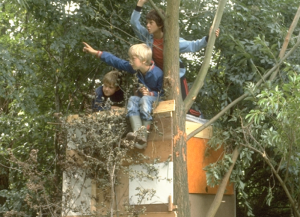
- Create a fort or camping zone with tents and natural materials.
- Add an unusual (safe) object or piece of art. My favorite was a 20’ tennis shoe dropped in the middle of a typical neighborhood park.
- Finally and obviously, the absolute best play yard is a messy, wild looking environment that engages children in their natural play world.
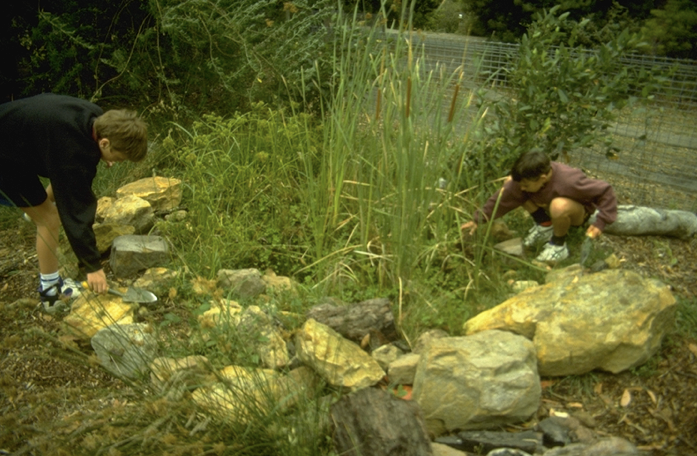 For more information on Natural Playgrounds, go to:
For more information on Natural Playgrounds, go to:
www.firefliesplay.com Camille Calderaro, MLA, ASLA, CPSI Bill Bleckwenn, RLA, Natural Resource Planner, LEED

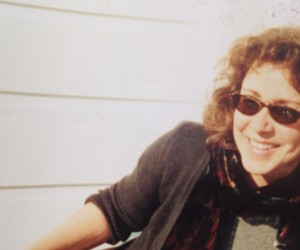
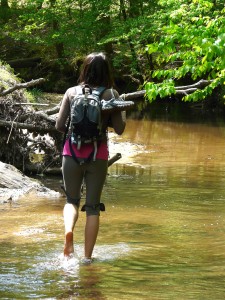
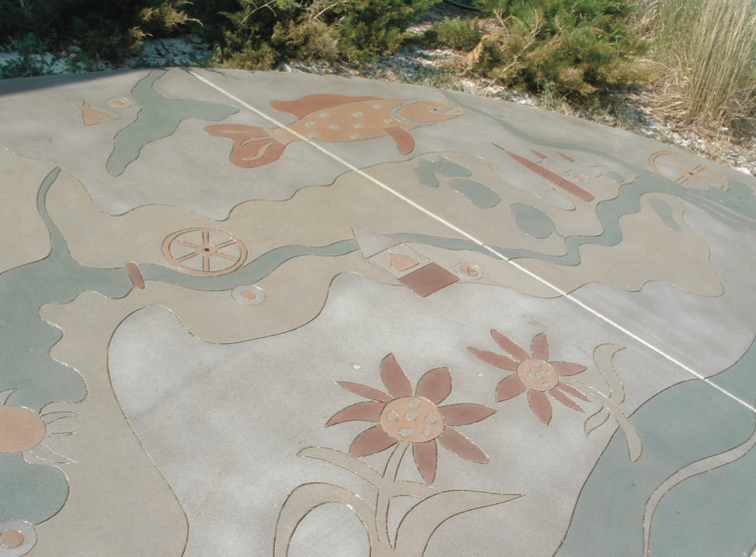
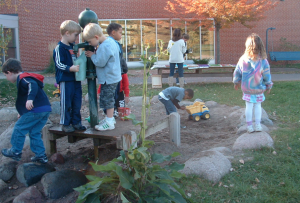
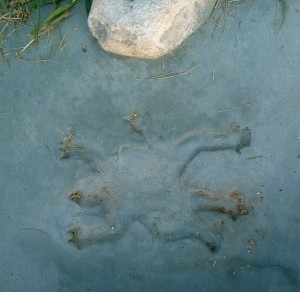
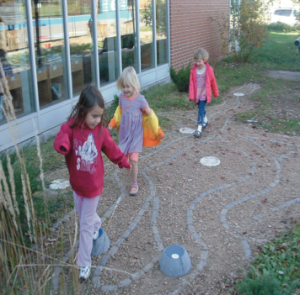

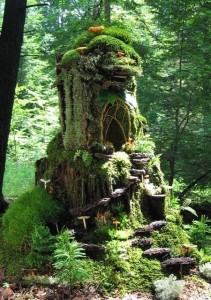



Seeing the recommendation:”Pile snow from plowing in an accessible play location.” in your section on “Design Considerations”—reminded me of my years of winter recess duty as a teacher of 1st & 2nd graders. How FUN it was to take the kids out after a big snow when the plows had created enormous mountains in the process of cleaning the the parking lot. We had a school supply of those light weight plastic sleds and we had enough for ever two kids to share a sled—what a treat, what happy rosey-cheeked kids! It also reminds me of another earlier school, poorer, where we didn’t have sleds, but we had a huge natural hill adjoining the parking lot and the kids used cardboard! I have to chuckle thinking of the kids flying down the hill at breakneck speed on that old cardboard. Great memories!!! We all loved it!